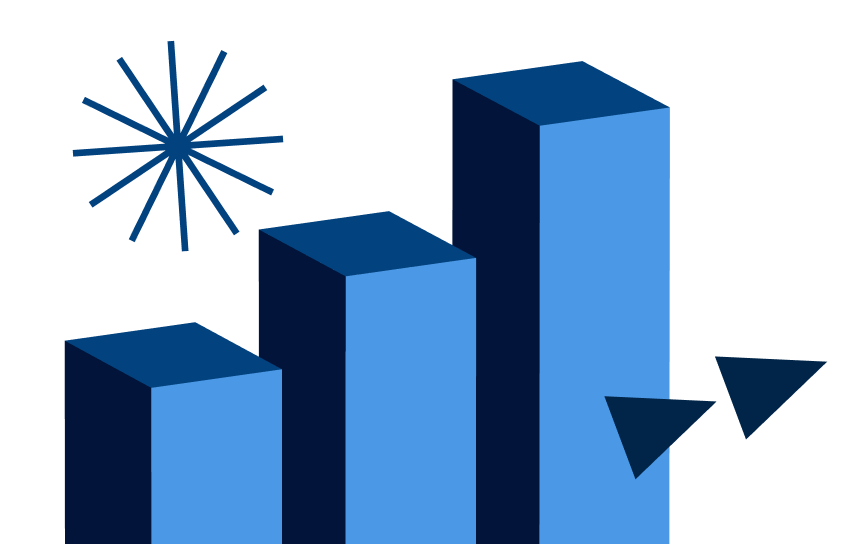Current U.S. Inflation Rate is 2.7%: Chart and Why It Matters
For the 12 months ending November 2025, the inflation rate was 2.7%.

Many, or all, of the products featured on this page are from our advertising partners who compensate us when you take certain actions on our website or click to take an action on their website. However, this does not influence our evaluations. Our opinions are our own. Here is a list of our partners and here's how we make money.
The investing information provided on this page is for educational purposes only. NerdWallet, Inc. does not offer advisory or brokerage services, nor does it recommend or advise investors to buy or sell particular stocks, securities or other investments.
Today's inflation rate
The current U.S. inflation rate is 2.7% for the 12-month period ending in November 2025. The consumer price index (CPI), which measures changes in prices, increased 0.2% from September to November, according to the latest release from the Bureau of Labor Statistics (BLS).
The energy index rose 1.1% over the two-month period. The shelter index increased 0.2% over the two-month period, and food increased 0.1%. The BLS did not collect survey data for October 2025 due to the government shutdown.
Over the last 12 months, the index for food increased 2.6%, the gasoline index rose 0.9% and the shelter index increased 3.0%. Medical care rose 2.9% and used cars and trucks rose 3.6%.
The December 2025 Consumer Price Index is scheduled for release on January 13.
What is inflation?
Inflation is the rate at which the price of goods and services increases. As a result of inflation, the purchasing power (value) of money decreases over time. Inflation affects the prices of everything around us.
Generally speaking, a number of factors can cause inflation. The recent surge in inflation has been driven, at least in part, by supply chain issues, a housing crisis, pent-up consumer demand and economic stimulus from the pandemic.
Historical U.S. inflation rates
The chart below reflects the inflation rate for all items, as well as the inflation rate excluding food and energy prices ("core" inflation).
The Federal Open Market Committee, the arm of the U.S. central bank that makes decisions about managing the nation’s money supply, targets a 2% rate of inflation over time.
The prices of different goods and services can rise at different rates. For instance, education and health care costs are generally subject to higher inflation rates than the average inflation rate.
U.S. tuition rates are typically more than double the general inflation rate, and on average, increase about 8% each year.
National health spending is projected to grow at an average annual rate of 5.8% between 2024 and 2033.
See where you stand compared to households like yours, and get steps you could take to grow from here.

NWWP is an SEC-registered investment adviser. Registration does not imply skill or training. Calculator by NerdWallet, Inc., an affiliate, for informational purposes only.
Types of inflation
There are many types of inflation, characterized by either a root cause or the rate of increase:
Cost-push. A common cause of inflation is when the costs of producing goods and services increase and push prices higher. This can happen when prices of raw materials or labor costs rise.
Demand-pull. Another cause of inflation is when the demand for goods and services outstrips what can be produced at the time, making prices go up.
Deflation. The opposite of inflation — a negative inflation rate or a drop in prices of goods and services.
Disinflation. A falling rate of inflation or slowdown in the rise in prices of goods and services.
Reflation. A way to curb deflation, when a government purposely stimulates the economy by increasing the money supply or government spending — such as the COVID stimulus payments. Reflation can also happen when a government lowers interest rates.
Creeping. Low or mild inflation with prices rising less than 3% a year.
Walking (trotting). Prices rise moderately, but the annual inflation rate stays in the single digits.
Running (galloping). Prices increase significantly into the double digits, above 10% a year.
Hyperinflation. Extraordinary inflation spiraling out of control, over 1,000% a year.
Stagflation. High inflation even during an economic downturn.
How to measure inflation
One commonly used inflation metric is the consumer price index, or CPI, calculated by the U.S. Bureau of Labor Statistics. The bureau measures CPI by monitoring the average change in prices paid for a variety of goods and services, classified by eight groups: food, housing, apparel, medical care, recreation, transportation, education and communication, and other goods and services.
There are other metrics that tell us about the inflation story, such as the personal consumption expenditures price index. PCE is calculated by the U.S. Bureau of Economic Analysis, which also prices a different basket of goods and services from the CPI basket.
You might hear of inflation described as headline or core. Headline inflation measures total inflation for a certain time period. Core inflation attempts to pinpoint a more accurate read on inflation by excluding food and energy prices, which can fluctuate widely on a daily basis.
Brokerage firms | |
|---|---|
Why inflation matters
The effects of inflation are felt throughout an economy. As prices rise, what you can buy now will lessen over time. Being able to combat, or at least keep up with, inflation and sustain the purchasing power of your money is one of the main reasons to invest your money.
Consumers care about inflation because it affects costs and their standard of living. Businesses carefully watch the price of raw materials that go into their products, as well as what wages they need to pay their employees. Inflation affects taxes, government spending and programs, the level of interest rates and more.
A low, steady or predictable level of inflation is considered positive for an economy. It signals growth and healthy demand for goods and services.
As businesses generate more goods and services to keep up with demand, they need to hire more workers, which generally leads to higher employment and wage growth. Those workers then purchase things they need and want, and the cycle continues. However, when inflation gets too high or too low, it becomes dangerous because it’s hard to keep supply and demand, along with economic growth, in check.
This brings us to the importance of investing. Although you’ll earn interest from the bank on money in your savings account, the interest rate you receive usually won't match or even come close to beating the inflation rate. That’s why it can make sense to invest your money if you can afford to and grow that money’s value over time. That way, you can buy the same amount of goods and services in the future.
When creating a plan to reach your financial goals, it’s important to bake in a realistic inflation rate for future expenses so you’re saving enough to meet your needs. A financial advisor can help you do that.
How to protect against inflation
Avoid hoarding cash
To make sure your money doesn’t lose too much value, it’s important to invest and not keep too much money in cash. Inflation means your money will probably buy less over time, so consider investing the money you don’t intend to use in the next three to five years so that you can avoid a decrease in purchasing power.
» MORE: How to invest $100,000
Diversify your portfolio
Another way to prepare for inflation is by having a well-diversified investment portfolio. Diversification, when you spread your investments across asset classes (stocks, bonds, cash, real estate, etc.), various industries and countries, helps enhance investment returns while simultaneously reducing risk, such as from inflation.
Certain investments are more inflation-tolerant than others or rise with inflation. Some of these natural inflation hedges include:
Real assets. Assets such as gold, silver or real estate, which may retain value or provide pricing power, may help withstand inflation. For example, landlords sometimes raise rents as inflation rises.
Stocks. Especially stocks with proven earnings growth and low debt. Interest rates tend to rise with inflation, causing companies with high debt to face higher payments.
Treasury Inflation-Protected securities. During inflationary times, rising interest rates negatively impact traditional bonds because bond prices and interest rates have an inverse relationship. TIPs are a type of bond indexed directly to CPI meant to help investors preserve purchasing power; I bonds are another option tied to inflation.
Have a strategy
Making sure your investments are set up to safeguard against inflation is important, and there are many factors to consider. Seeking a second opinion from a financial advisor can be useful to ensure that you’re on the right track and have prepared your portfolio to weather all seasons of varying economic environments.
» Ready to start investing? See our picks for online wealth advisors
All about inflation
All about inflation








